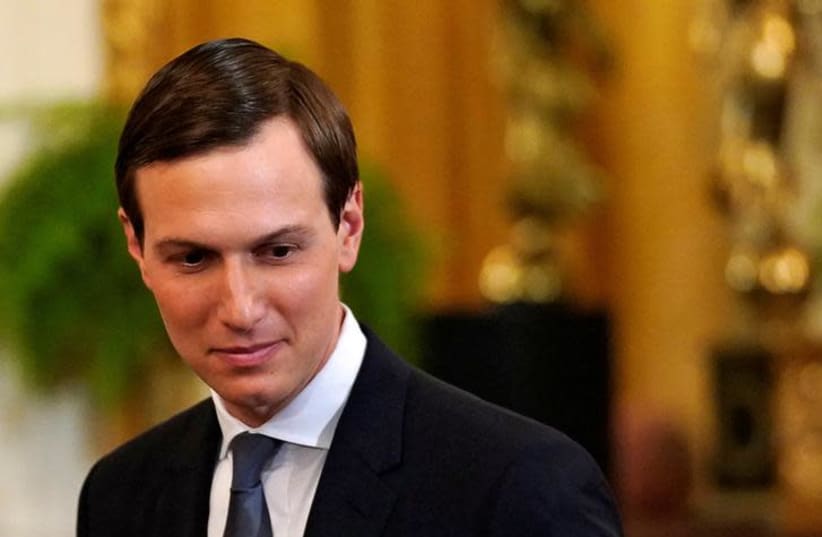“The hope is that they’ll wait until after the election, and we’ll work with them to try to come up with something,” Kushner said in an interview with GZERO World.The mixed messages from Israel and the US on when settlement annexation could take place are because Israel is pursuing a two-step process, whereas the US wants one, complete step, a senior source in Prime Minister Benjamin Netanyahu’s delegation explained.“What we achieved is great. An American president says he recognizes Israel’s right to apply sovereignty to the Jordan Valley, to 30% of Judea and Samaria,” the source said on the flight from Russia to Israel. “The problem is a technical one.”Earlier in the week, Netanyahu said he would bring the annexation of settlements and the Jordan Valley to a cabinet vote on Sunday. But then his office said the vote would take place next week.Kushner said if the Trump administration were asked to support immediate annexation, the answer would be “No.”“What the administration is doing is we’ve agreed with them on forming a technical team to start studying, taking the conceptual map – the Jordan Valley can mean a lot of different things, and I want to make sure we have all the parameters defined and that we also have a situation where we know what the freeze is,” he said.“What we have now is more like a term sheet, and we have to work over a couple of months to turn that into a document that we can both feel good about,” he continued. “We will start to work on the technical stuff now, but I think we need an Israeli government in place in order to move forward.”Israel has already drafted maps and other materials needed to bring before the Americans for review, the source on Netanyahu’s plane said.“We think some of the work is fast and easy. That’s why we want to do it already. We’ll show it to them,” the source stated.Israel sees annexation as a two-part process. There’s the “easy part,” according to the senior source, applying Israeli law to settlements, which are already mapped out and which Israel seeks to annex immediately. Then there is the “really not easy” part, which is drawing the lines for the broader territory.“This needs work on creating accurate maps. We said we should do it in stages so that we can make progress on what Israel and the Americans want to achieve,” he said. “The Americans don’t want to have to repeat the same argument” at each stage of the process.On the tarmac at Andrews Air Base near Washington on Wednesday, as Netanyahu headed to Moscow to meet with Russian President Vladimir Putin, the prime minister dodged questions about annexing settlements amid reports that he was backing down from earlier promises of applying Israeli sovereignty next week to the settlements.“Everything will be alright,” Netanyahu said, when asked about annexation.Kushner also released an op-ed on CNN on Wednesday, in which he called for the Palestinians to come to the negotiating table.“Our vision for peace is by far the most comprehensive and realistic plan that has ever been realized,” he wrote.“The future State of Palestine will have a capital, including parts of east Jerusalem, east of the security barrier,” he continued. “If Israel and the Palestinians reach a final agreement, President Trump will be proud to stand with Palestinian President Mahmoud Abbas when we fly the American flag over the US Embassy to the State of Palestine for the first time.”He said that the peace team’s vision maintains the status quo at the Temple Mount while dramatically improving access.“I am proud to say that if a final agreement is reached, Israel has agreed that all Muslims will be welcome to peacefully worship at al-Aqsa Mosque. For the first time, the holy city will be open to the 1.5 billion Muslims from the State of Palestine and around the world,” he noted.He also mentioned that both Prime Minister Benjamin Netanyahu and Blue and White Party leader Benny Gantz support the plan.“This means for the first time, the leaders of Israel have not only endorsed the creation of a future Palestinian state, but a map and a process,” he added. “History will note this breakthrough was only possible because of the President’s uncompromising support for Israel and its security.”“This is a pivotal moment. We can choose to work together now to build on this unprecedented opportunity, or return to the same old talking points and positions that lead us to where we are today,” he added. “Palestinians may have issues with aspects of this plan. But to address them, they should identify the areas they would like to improve and agree to negotiate with Israel. Failure to do so would be to miss an opportunity which may never come again.”.@jaredkushner: The US does not support Israel immediately annexing settlements.More from @IanBremmer's White House interview: https://t.co/kX0pWP0KoM pic.twitter.com/TbqU1u5Da9
— GZERO Media (@gzeromedia) January 30, 2020
Kushner on annexation: The hope is they'll wait until after the election
The senior White House adviser added that while work on technical details could start right away, finalizing the maps would require a couple of months.
